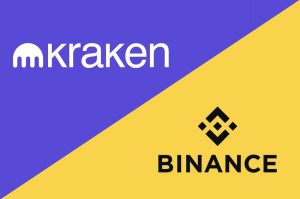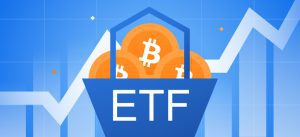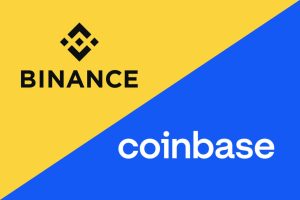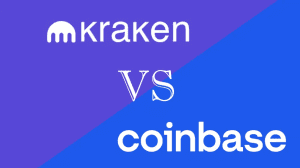What Is USD Coin (USDC)? – Full Guide
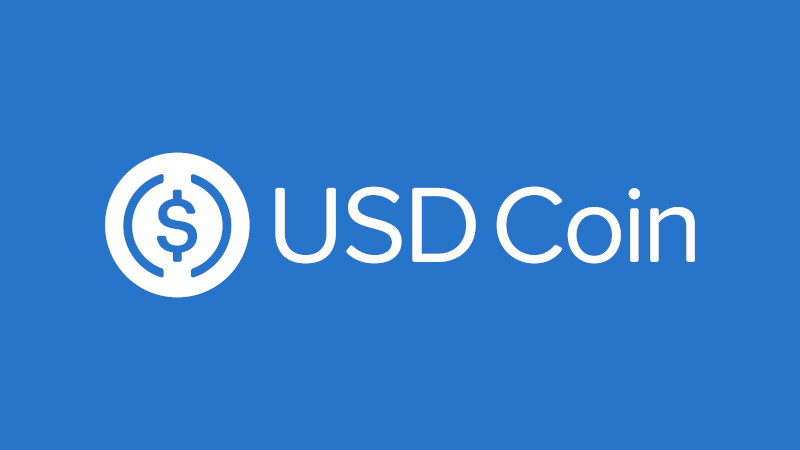
In the modern world of finance, stablecoins are now a crucial component for achieving stability and facilitating transactions within the digital economy. USD Coin (USDC) is one of the stablecoins that has gained significant traction due to its pegging to the US Dollar and its potential for various use cases.
In this article, we will explain what USD Coin is and how it works. Moreover, we’ll highlight its history, pros and cons, and diverse use cases. And we cover everything in simple English – No technical jargon.
The USD Coin Short Version
Discover the main USDC talking points that we discuss in our comprehensive guide:
- USD Coin (USDC) is a stablecoin pegged to the US Dollar, designed to mitigate volatility in the cryptocurrency market.
- It operates on blockchain technology where USDC tokens are minted against US Dollar deposits.
- Centre Consortium oversees USDC issuance, ensuring transparency and maintaining a 1:1 peg.
- USDC’s pros include stability, transparency, interoperability, and global accessibility, while its cons involve centralization and regulatory scrutiny.
- USDC faced a setback when its value fell due to exposure to the collapsed Silicon Valley Bank (SVB), but it regained stability with Circle’s commitment and regulatory actions.
What Is USD Coin and How Does It Work?
USD Coin (USDC) is a cryptocurrency known as a stablecoin. Stablecoins aim to address the volatility issues that often come with other cryptocurrencies like Bitcoin or Ethereum. The distinguishing feature of USDC is its direct peg to the US Dollar, with each token backed by one US Dollar held in reserve.
Consequently, the pegging mechanism seeks to maintain a 1:1 value ratio between USDC and USD, thus stabilizing the token’s value.
USDC operates on blockchain technology and is compatible with several blockchains, including Ethereum, Solana, Algorand, Stellar, and TRON.
The process begins with a user depositing US Dollars into an accredited financial institution. Once the funds are verified and audited, an equivalent amount of USDC tokens is minted and issued to the user’s digital wallet. Investors can then use these tokens for various transactions, including peer-to-peer transfers, payments, and trading on cryptocurrency exchanges.
One of the main strengths of USD Coin is transparency. The Centre Consortium, a collaboration between Circle and Coinbase, oversees the issuing and managing of USDC tokens. Furthermore, regular audits take place to ensure that the number of coins in circulation matches the amount of US Dollars held in reserve.
Brief History
Centre Consortium introduced USD Coin in September 2018 to respond to the need for a stablecoin that provides stability and transparency in cryptocurrency. Its launch was a part of the broader trend of stablecoins gaining traction and relevance in the market. Over the years, USDC has garnered support from various cryptocurrency exchanges, financial institutions, and decentralized finance (DeFi) projects.
Pros
- Stability: The most significant advantage of USDC is its stability. It maintains a 1:1 peg to the US Dollar, reducing the volatility associated with other cryptocurrencies.
- Transparency: USDC operates under a transparent framework with regular audits, ensuring that US Dollars fully back the token supply.
- Interoperability: Various cryptocurrency exchanges, wallets, and platforms support USDC, making it easy to use for multiple purposes.
- Global accessibility: USD Coin provides a digital representation of the US Dollar, allowing users worldwide to access the benefits of a stable currency without traditional banking barriers.
Cons
- Centralization: Centre Consortium oversees and manages USDC, which may raise concerns about centralization and control.
- Regulatory scrutiny: Stablecoins like USD Coin have faced regulatory scrutiny regarding their classification and compliance with financial regulations.
Use Cases of USD Coin
There are many ways on how to use USD Coin (USDC), including:
- Trading and investing: USDC serves as a bridge between traditional financial markets and the cryptocurrency space, enabling users to easily move funds in and out of the digital asset ecosystem.
- Remittances: Traders can use USDC for cross-border transactions and remittances, which is more cost-effective and efficient than traditional remittance services.
- DeFi: USD Coin is popular within various DeFi applications. That includes lending, borrowing, and yield farming, where its stability is crucial for maintaining collateral value.
- E-commerce and payments: Online merchants and platforms can integrate USD Coin to offer users a stable and borderless payment method.
USD Coin Breaks Dollar Peg After SVB Exposure
USD Coin faced a significant setback when it dropped below its usual value in March this year. This decline emerged because Circle revealed that nearly 8% of its $40 billion reserves were with the now-collapsed Silicon Valley Bank (SVB).
While USDC aims to maintain a value of $1, its value plummeted below 87 cents, marking a record low. The collapse of SVB, regulators’ intervention, and the seizure of its deposits contributed to the crisis. SVB’s sudden downfall came after it unexpectedly announced its need for a $2.25 billion capital injection to stabilize its finances. As a result, it culminated in a swift decline.
In response, Circle released a tweet disclosing that it holds $3.3 billion of its reserves within SVB, advocating for the bank’s stability and promising compliance with regulatory guidance.
The aftermath of SVB’s collapse raises concerns within the cryptocurrency industry and beyond. Following the collapse of FTX the previous year, the deviation of USDC’s value from its dollar peg highlights potential challenges ahead. Like traditional banks, stablecoins like USD Coin are susceptible to runs and market panic.
Withdrawals of $42 billion were reported from SVB deposits within a short span. Hence, it led to a negative cash balance of $958 million as the bank failed to secure enough collateral from alternative sources.
USDC Quickly Reclaims Peg After Temporary Disruption
After its temporary deviation from its peg to the US Dollar, USD Coin subsequently restored stability. Federal Deposit Insurance Corporation (FDIC) reassured insured SVB depositors that they would regain access to their funds in a matter of days.
However, uninsured depositors would receive an advance later in the upcoming week, with a dividend from the FDIC’s sale of SVB’s assets. Notably, more than 90% of the funds held by SVB were uninsured.
Furthermore, USDC’s value gradually rebounded – reaching 97 cents – after Circle’s commitment to cover any potential shortfall in USDC reserves with corporate funds.
The incident prompted several prominent crypto exchanges to take action. Coinbase temporarily paused conversions from USDC to US dollars. Meanwhile, Binance announced its decision to resume trading specific USD Coin trading pairs that were previously suspended.
USDC Frequently Asked Questions
Learn about USDC Coin.
How is the value of USDC maintained at 1:1 with the US Dollar?
USDC’s value is maintained through a reserve system, where each USDC token is backed by an equivalent amount of US Dollars held in reserve.
Can I redeem USDC for actual US Dollars?
Yes, most platforms that support USD Coin allow users to redeem their USDC tokens for US Dollars at a 1:1 ratio, subject to their terms and conditions.
Is USDC available on platforms other than Ethereum?
While USD Coin originated on the Ethereum blockchain, it has expanded to other blockchains, including Algorand and Solana, to increase accessibility and reduce network congestion.
Is USDC regulated?
To ensure compliance, USDC issuers and operators adhere to regulatory requirements, such as anti-money laundering (AML) and know-your-customer (KYC) regulations.
Can I earn interest on USDC holdings?
Many DeFi platforms offer users the opportunity to earn interest on their USDC holdings through lending and liquidity provision.
USD Coin (USDC) Explained – Final Thoughts
USD Coin (USDC) plays a vital role in the cryptocurrency ecosystem by offering stability, transparency, and accessibility. Its 1:1 peg to the US Dollar makes it a preferred choice for traders, investors, and users looking for a reliable digital representation of traditional currency.
While it comes with its pros and cons, USDC’s history and growing adoption across various sectors demonstrate its potential to reshape how we transact, invest, and participate in the digital economy.
Please note that cryptocurrency investments carry inherent risks, and it is essential to conduct thorough research and seek professional advice before engaging in any financial transactions.

